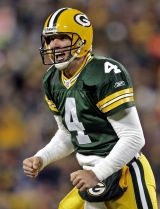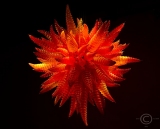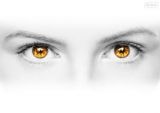- Forum
- General Discussion | Introductions | Off Topic Forum
- Photography General Discussion
- Photographing a dance recital with no flash and no tripod
Photographing a dance recital with no flash and no tripod
-
 Topic Author
Topic Author
- Jim Photo
- The Lounger
- Nikon D700
- Followers: 155
- Posts: 1430
-
Points:
3595
Post #289426
-

- garyrhook
- Oh Wise One
-
- Nikon D850, Nikon D750, Panasonic G7K
- Followers: 912
- Posts: 11103
-
Points:
67681
Post #289430
Jim Photo wrote: Time to get friendly with my fastest lenses. We have a dance recital of my daughter next week and I just found out that you bring cameras, but no flash and no tripods will be permitted.
I've heard of no tripods, but the flash seems excessive to me. Well, I guess higher ISO and shallow DOF will be the magic touch here.
As a performer (musician for many years) let me assure you that flashes are dangerous in a darkened room. They can blind you, keeping you from seeing anything for several seconds. That's dangerous, even moreso for a dancer. Even if flash is allowed you should never use it in that situation. It's inappropriate. It's incredibly annoying to everyone else in the auditorium, as well as others taking pictures wherein your flash may fire while someone else is snapping the shutter. Yes, I speak from experience as a photographer on that point.
You can see some of my shots at www.grhookphoto.com/event in the AMDE group. If you have any light at all you'll be working at f/4 at 1/250 s with an ISO of 2000 or more. And you'll still have to PP to brighten the images and smooth the noise. Also, if the dancers are moving a fast shutter speed is required to keep the blur to a minimum. You can also see the setting on all of my shots.
A monopod may be helpful, but a tripod won't really add anything. The problem here is speed of movement and stage lighting. Depending on where you are you can hopefully get away with not being wide open. But you'll want some fast glass. If you have a 50mm f/1.8 I suggest using it at 2 or 2.8 from farther back in the room. Wide open will expose you to CA. You don't want that.
Finally: timing is everything.
-

- ShadowWalker
- Photography Hooked
-
- Sony A7s III and D700
- Followers: 131
- Posts: 662
-
Points:
1646
Post #289537
-

- John Landolfi
- Super User
-
- Nikon D3S, D7100, Sony RX10, Canon G11, F4s, F2sb, RetinaflexIV etc, etc
- Followers: 1205
- Posts: 21605
-
Points:
40394
Post #289543
garyrhook wrote:
Jim Photo wrote: Time to get friendly with my fastest lenses. We have a dance recital of my daughter next week and I just found out that you bring cameras, but no flash and no tripods will be permitted.
I've heard of no tripods, but the flash seems excessive to me. Well, I guess higher ISO and shallow DOF will be the magic touch here.
As a performer (musician for many years) let me assure you that flashes are dangerous in a darkened room. They can blind you, keeping you from seeing anything for several seconds. That's dangerous, even moreso for a dancer. Even if flash is allowed you should never use it in that situation. It's inappropriate. It's incredibly annoying to everyone else in the auditorium, as well as others taking pictures wherein your flash may fire while someone else is snapping the shutter. Yes, I speak from experience as a photographer on that point.
You can see some of my shots at www.grhookphoto.com/event in the AMDE group. If you have any light at all you'll be working at f/4 at 1/250 s with an ISO of 2000 or more. And you'll still have to PP to brighten the images and smooth the noise. Also, if the dancers are moving a fast shutter speed is required to keep the blur to a minimum. You can also see the setting on all of my shots.
A monopod may be helpful, but a tripod won't really add anything. The problem here is speed of movement and stage lighting. Depending on where you are you can hopefully get away with not being wide open. But you'll want some fast glass. If you have a 50mm f/1.8 I suggest using it at 2 or 2.8 from farther back in the room. Wide open will expose you to CA. You don't want that.
Finally: timing is everything.
www.photographytalk.com/photo-galleries/...d=5910#photoid=58092
-

- Conner
- The Lounger
-
- 5D Mark II
- Followers: 196
- Posts: 1050
-
Points:
6941
-

- Stealthy Ninja
- Moderator
-
- Fuji X stuff and a 1DsIII for some reason
- Followers: 982
- Posts: 16300
-
Points:
6837
Post #289589
Usually these things have pretty bright light on the stage (or artistic stage lighting) so adding flash light will just ruin the mood.
Post #289648
Sometimes dealing with low light and movement I found it can help to watch for a pause, sometimes before turning to move a different direction, to get a shot then. I try to watch for when someone will be under a light instead of in a darker corner or area.
Sharon
- Forum
- General Discussion | Introductions | Off Topic Forum
- Photography General Discussion
- Photographing a dance recital with no flash and no tripod
Latest Reviews
The Olympus Pen E-P7 is an affordable micro four thirds mirrorless camera with 4K video capabilities, a 20.3MP sensor, and 121 focus points, making it a solid entry-level camera for beginners.
The Panasonic G9 II is a 25.2-megapixel micro four thirds camera with numerous features that make it punch out of its weight class, like 779 AF points, 5.8K video, and weather sealing.
The Fujifilm XT5 is a 40MP mirrorless camera capable of 6.2K video at 30p. With those specs, it’s an ideal choice for photographers needing a camera to pull double duty for imaging and video.
The Canon EOS R100 is an entry-level mirrorless camera introduced in 2023. But just because it’s an entry-level camera doesn’t mean it’s a bare-bones camera. Find out why in this review!
Forum Top Posters
-
1Scotty 9 posts
-
2Roman Omell 4 posts
-
3Razky 4 posts
-
4Pat White 3 posts
-
5CharleyL 3 posts
-
6ShutterPal 3 posts
-
7Ruby Grace 3 posts
-
8Roger Lang 3 posts
-
9Nefarious 3 posts
-
10Jim Photo 3 posts
Latest Articles
Upgrade your kit in 2024 with the best intermediate camera on the market! The question is, what camera fits the bill? We’ve got three top options for you to choose from in this buyer’s guide.
The best photography jobs right now are a mix of tried-and-true gigs like wedding photography and new jobs highlighting AI’s capabilities, travel, and videography.
The Olympus Pen E-P7 is an affordable micro four thirds mirrorless camera with 4K video capabilities, a 20.3MP sensor, and 121 focus points, making it a solid entry-level camera for beginners.
Starting a photography business is one thing; sustaining your business over a long period of time is another. Use the tips in this professional photography guide to build something with longevity!
The Panasonic G9 II is a 25.2-megapixel micro four thirds camera with numerous features that make it punch out of its weight class, like 779 AF points, 5.8K video, and weather sealing.
Cinematic photography is an interesting genre that combines photographic and videographic skills along with effective storytelling techniques. The result? Highly impactful images!
Newborn photography requires skill, the right gear, and a lot of patience. This beginner’s guide discusses critical topics that will help you be more prepared for before, during, and after the shoot.
To fill the frame means to expand the footprint of the subject in your shot. Get in close, zoom in, crop the image, or use other techniques to bring the subject to the forefront.

















